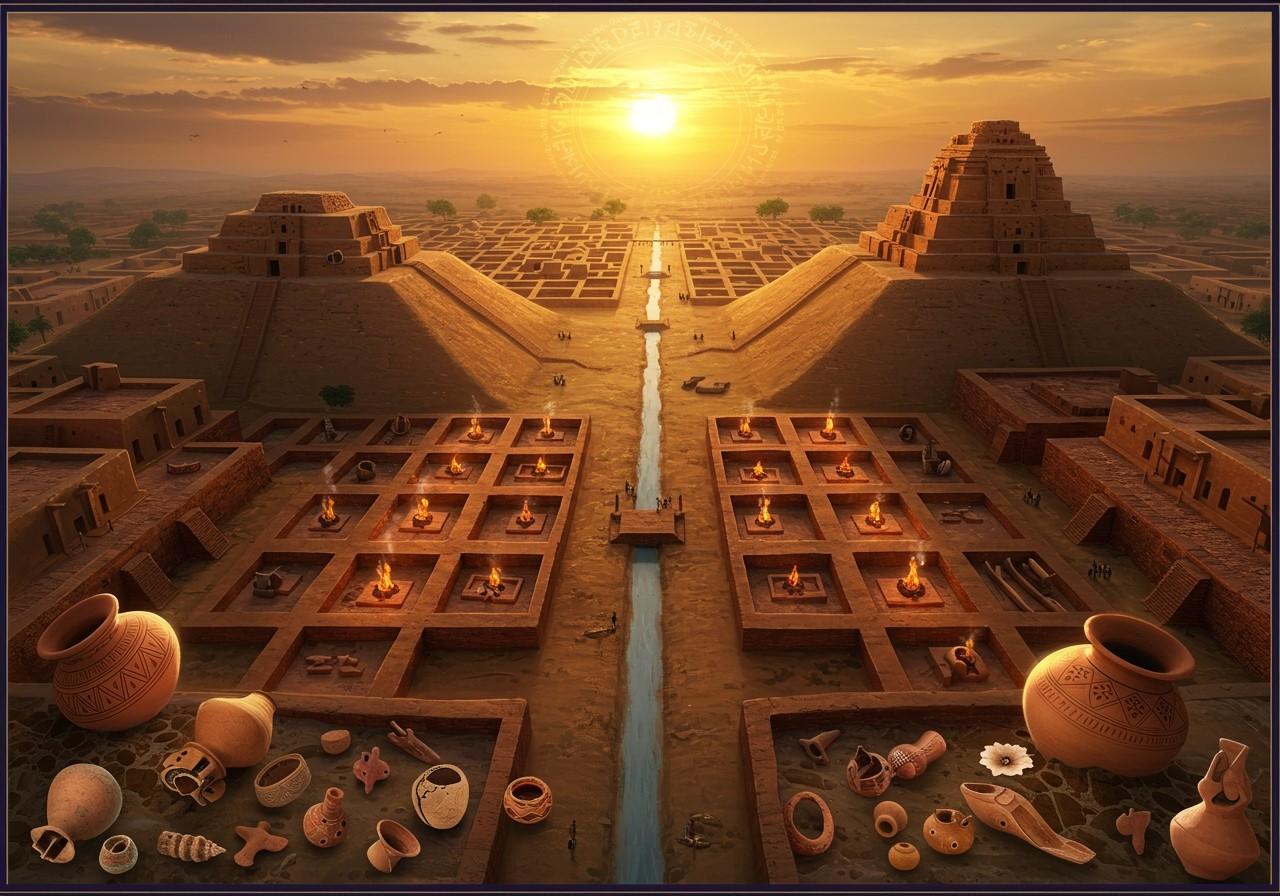
Kalibangan, an ancient city nestled in Rajasthan, India, stands as a testament to the sophisticated urban planning and architecture of the Indus Valley Civilization. This blog delves into the city’s intriguing layout, housing structures, and the prominent citadel, offering a glimpse into the lives of those who inhabited this ancient metropolis between 3300 and 1300 BCE.
A Journey Through Time: Kalibangan’s Historical Significance
Kalibangan’s discovery by Luigi Pio Tessitori in the early 20th century marked a significant moment in archaeological history. Subsequent excavations by the Archaeological Survey of India in the 1960s unveiled its flourishing period between 2500 BCE and 1750 BCE, a period coinciding with the broader Indus Valley Civilization’s prominence. This civilization, also known as the Harappan culture, extended across present-day India and Pakistan, with Kalibangan strategically located along the Ghaggar-Hakra River, a vital resource for agriculture and trade.
The City’s Blueprint: Town Planning in Kalibangan
Kalibangan’s urban design showcases remarkable foresight and meticulous planning. The city was distinctly divided into two sections: the elevated Citadel and the Lower Town. A grid pattern of streets facilitated organized traffic flow and efficient administration, a hallmark of advanced urban planning. The city’s impressive drainage system, featuring covered drains and soakage jars, reflects a strong emphasis on hygiene and sanitation, principles that resonate even today.
Public amenities such as wells and bathing platforms underscored the importance of public health, while fortified walls provided protection from external threats. Residential areas were thoughtfully planned, incorporating open spaces for communal activities, fostering a sense of community. This sophisticated urban planning is comparable to other major Indus Valley cities like Mohenjo-Daro and Harappa, highlighting the civilization’s advanced understanding of urban development.
Homes of the Ancients: Housing Structures in Kalibangan
The residential buildings in Kalibangan reveal unique architectural elements. Mud-brick and fired bricks, crafted with standardized sizes, were the primary construction materials, demonstrating a commitment to uniformity and planned construction. Typical houses featured courtyards, multiple rooms, and dedicated kitchen areas, reflecting a well-organized domestic life.
The presence of private wells and toilets within the houses further emphasizes the importance of sanitation and personal hygiene. Variations in house sizes suggest a degree of social stratification within the community. Evidence of multi-storied buildings points to advanced construction techniques and the ability to maximize space. The use of locally sourced materials like wooden beams and reed mats for roofing demonstrates adaptability to the environment and resourcefulness.
The Heart of the City: The Citadel of Kalibangan
The Citadel, a raised and fortified area within Kalibangan, held significant importance within the city’s structure. Its defensive walls and gateways suggest a strategic role in protection and control. Large public buildings within the Citadel likely served administrative or ceremonial purposes, reflecting the city’s organized governance and spiritual practices. The presence of fire altars hints at ritualistic activities and the importance of religious beliefs in daily life.
Storage facilities for grains indicate a centralized system of resource management and planning for potential shortages. The Citadel’s role in governance, social organization, and resource management mirrors similar structures found in other Indus Valley cities, underscoring the civilization’s consistent approach to urban development. Archaeologists continue to study the Citadel’s various structures to fully understand their specific functions and significance.
Connecting to the Past: Poojn.in and Your Spiritual Heritage
Poojn.in, India’s leading online store for cultural and religious goods, offers a wide range of products to connect you with India’s rich spiritual heritage. As you explore the fascinating world of Kalibangan and the Indus Valley Civilization, consider enhancing your personal spiritual practices with authentic puja items and ritual materials available at Poojn.in.
- Traditional Puja Items: Discover a diverse selection of traditional puja items crafted according to ancient customs and specifications, ensuring authenticity and reverence in your spiritual practices. From diyas and incense to statues and ritual accessories, Poojn.in offers everything you need for your puja needs.
- Authentic Materials: Poojn.in sources its materials from trusted suppliers, guaranteeing the quality and authenticity of each product. Experience the spiritual significance of using genuine materials in your rituals and ceremonies.
Explore our collection today:
Conclusion: Kalibangan’s Enduring Legacy
Kalibangan’s legacy extends beyond its archaeological significance. It serves as a powerful reminder of the ingenuity and advanced urban planning of the Indus Valley Civilization. The city’s well-structured layout, robust infrastructure, and thoughtful design elements continue to inspire modern urban development. Kalibangan offers valuable insights into sustainable living and resource management, principles that hold relevance even today.


